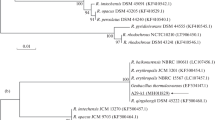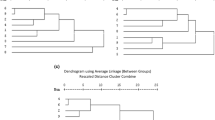Abstract
The genetic relationship of quinoline and isoquinoline compounds present in semicoking tars of Kimovsk lignites (near-Moscow fields) with the initial vegetable material is discussed. Transformation pathways of the native compounds in the course of lignite formation are suggested.
Similar content being viewed by others
REFERENCES
Polovetskaya, O.S., Chemical Composition of Organic Bases from Semicoking Tar of Near-Moscow Lignites and Thermochemical Transformations of These Bases, Cand. Sci. Dissertation, St. Petersburg, 1999.
Organic Geochemistry. Methods and Results, Eglinton, G. and Murphy, M.T.J., Eds., Berlin: Springer, 1969.
Podshibyakin, S.I., Genetic Relationship between the Pyrone Group Compounds in the Organic Matter of Kansk-Achinsk Lignite and the Initial Biological Material, Cand. Sci. Dissertation, St. Petersburg, 2000.
Orekhov, A.P., Khimiya alkaloidov (Alkaloid Chemistry), Moscow: Akad. Nauk SSSR, 1955.
Bronshtein, A.P., Makarov, T.N., Akulov, P.V., and Grigor'ev, N.P., Khim. Tverd. Topl., 1979, no. 6, pp. 65-74.
Author information
Authors and Affiliations
Rights and permissions
About this article
Cite this article
Platonov, V.V., Proskuryakov, V.A., Podshibyakin, S.I. et al. Genetic Relationship of Organic Bases of the Quinoline and Isoquinoline Series from Lignite Semicoking Tars with the Initial Biological Material. Russian Journal of Applied Chemistry 75, 649–655 (2002). https://doi.org/10.1023/A:1019537702444
Issue Date:
DOI: https://doi.org/10.1023/A:1019537702444




